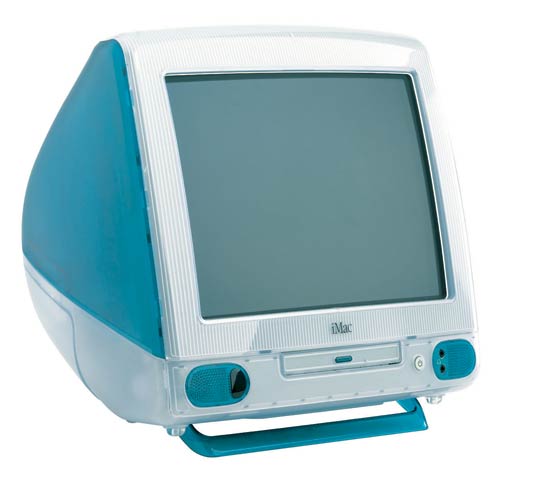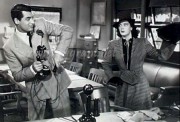Archive
10 things you probably don’t know about Steve Jobs
1) In 1985, when he was being pushed out of Apple by CEO John Sculley, Steve Jobs was approached by NASA to be the civilian astronaut on the ill-fated Challenger mission. He baulked at the six-month training required and refused.
2) Tim Berners-Lee developed the first WorldWideWeb browser-editor using Steve Jobs’ NeXT, the pioneering hardware/software system he developed after being booted out of Apple (the operating system which Apple later bought and which later metamorphised into OSX, which today underpins the iPod, the iPhone, the iPad etc). “This had the advantage that there were some great tools available,” Berners-Lee wrote. “[I]t was a great computing environment in general. In fact, I could do in a couple of months what would take more like a year on other platforms, because on the NeXT, a lot of it was done for me already.”
3) In 1986, Star Wars director George Lucas sold the Graphics Project Computer Division of his Lucasfilm company to Steve Jobs for $10m because he urgently needed cash to complete his latest project, Howard the Duck. He originally wanted $30m, but Jobs beat him down to $10m. Howard the Duck bombed on release and is regularly castigated as one of the worst films ever made. Jobs renamed his new CGI company Pixar, And then…
4) At first, Steve Jobs had little to do with the day-to-day running of Pixar’s animation division, instead concentrating on creating the Pixar Image Computer, designed for weather, engineering, science and medical imaging. It bombed, selling fewer than 300, only 100 more than the original Wozniak-Jobs Apple I. On several occasions he even thought of flogging off the animation division, most infamously after “Black Friday” – November 19, 1993, when a calamitous screening of their work-in-progress, Toy Story, for Disney executives had Magic Kingdom executives seriously thinking of pulling the plug on the whole project. Luckily, Pixar’s in-house genius John Lasseter went away and re-thought the project. It was a huge success at pre-release screenings; Jobs took note and started to get more involved in Pixar, cannily gambling on floating the company a week after the release of Toy Story on November 22 – Thanksgiving weekend. As we know, Toy Story was the big success of 1995, guaranteeing the subsequent success of the IPO (initial public offering). Jobs held onto 80% of the shares, and virtually overnight he became a billionaire.
5) Steve Jobs hated the name “iMac” and initially rejected it when it was suggested by Ken Segall, the creative director at Apple’s ad agency, TBWA\Chiat\Day. In a 2009 interview, Segall said:
He didn’t like ‘iMac’ when he saw it. I personally liked it, so I went back again with three or four new names, but I said we still liked iMac. He said: ‘I don’t hate it this week, but I still don’t like it.’
Segall then heard from friends that Jobs was having the name silk-screened on prototypes of the new Mac, to see how it looked:
He rejected it twice but then it just appeared on the machine. He never formally accepted it.
(To be fair to Jobs, he may not have initially liked the name iMac, but the TWBA honchos were in turn initially horrified when they first saw the bondi-blue bubble iMac. Segall says: “We were pretty shocked but we couldn’t be frank. We were guarded. We were being polite, but we were really thinking, ‘Jesus, do they know what they are doing?’ It was so radical.”)
6) Although Ridley Scott’s famous 1984 Macintosh ad is popularly believed to have been screened only once – during the Super Bowl XVIII clash between the LA Raiders and the hapless Washington Redskins – this was in fact the second time the ad had screened. It was initially aired at 1am on December 15, 1983, in Twin Falls, Idaho. With his usual marketing savvy, Steve Jobs had arranged for it to be screened on a small network at a time when hardly anyone would see it so it could be considered for that year’s ad awards. It duly won the Grand Prix at the 31st Cannes Lions International Advertising Festival in 1984.
Oddly, it almost never screened at all. While many of those who saw it loved it, one highly influential group hated it: Apple’s board of directors. After the initial screening in December 1983, board member Mike Markkula asked, “Who wants to move to find a new agency?”
The board left the decision of what to do with the commercial up to then-President John Sculley. Sculley ordered Chiat\Day to sell the air time it had bought, but the agency sold only 30 seconds of the 90 seconds it had bought, leaving just enough time for the full ad to run. An Apple VP finally gave the agency the go-ahead to run the famous 1984 spot during the Super Bowl.
7) Steve Jobs served on the Board of Directors at clothing retailer Gap from 1999 to 2002, during which time he attended only 66% of its meetings. At the same time he joined Gap’s board, Gap’s chairman Mickey Drexler joined Apple’s board. At the time, this swap was criticised by BusinessWeek, which at the time rated both companies’ boards among the “eight worst in America”. It’s not known what Jobs brought to the Gap board’s table (a move away from the company’s ubiquitous beige, perhaps?) but he must have picked up a few tips that came in handy when he opened the first Apple Stores on May 19, 2001.
9) Steve Jobs’ biological father was a Syrian Muslim immigrant to the US, Abdulfattah John Jandali, later a political science professor and even later a Nevada casino chain owner. Jandali and Jobs’ biological mother, Joanne Simpson (née Schieble), put the infant up for adoption because, Jandali says, her parents objected to their daughter marrying an Arab. (They did marry and had one daughter, the novelist Mona Simpson). Biological father and biological son never spoke to each other, let alone met.
10) Steve Jobs dropped out of his course at Reed College, in Portland, Oregon, on December 30, 1972, after only one semester, because of the financial pressure on his parents. However, he got permission from a college official to freely audit (ie, attend without getting an assessment or grade) classes, eventually settling on one in calligraphy. He slept on the floor in friends’ rooms or in unoccupied dorm rooms and returned Coke bottles to get money for food, with his weekly treat being a free vegetarian meal at the local Hare Krishna temple. He later said: “If I had never dropped in on that single calligraphy course in college, the Mac would have never had multiple typefaces or proportionally spaced fonts.”









